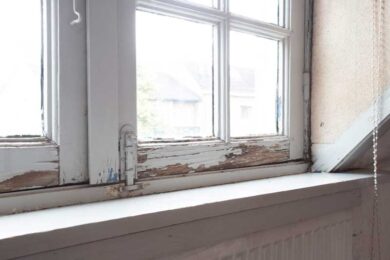Comprehensive Overview on Effective Lead Infraction Elimination Strategies
In the realm of environmental safety, dealing with lead infractions requires a thorough and structured approach. This comprehensive overview starts by highlighting the important initial steps of identifying lead threats via sophisticated evaluation and screening methods. Strategies such as XRF analysis and dirt wipe sampling are indispensable in identifying contamination sources. Additionally, the overview elaborates on the importance of sticking to rigorous security protocols during the removal process, including making use of correct PPE and separating impacted areas (Lead Paint Removal Company). The subsequent sections guarantee to review post-removal confirmation and preventive approaches, ensuring lasting safety and security and conformity. Discover the intricate information that make these methods not just efficient however important.
Determining Lead Dangers
Recognizing lead hazards is a crucial initial step in minimizing the risks associated with lead direct exposure. Lead, a toxic steel, can be present in various ecological tools, consisting of paint, soil, water, and dirt. It presents severe wellness threats, especially to children and pregnant ladies, leading to neurological damages and developing delays. Consequently, exact recognition of possible lead sources is crucial for reliable removal.
The initial stage in recognizing lead risks involves understanding typical lead resources within the built atmosphere. Frameworks constructed before 1978 are particularly vulnerable as a result of the prevalent use lead-based paint during that duration. Additionally, dirt contamination can occur from degrading exterior paint, industrial emissions, or historical use of leaded gas.
Another substantial source is lead piping and pipes components, which can leach lead into alcohol consumption water. Durable goods such as playthings, ceramics, and imported items might additionally contain dangerous lead levels. Significantly, job-related settings and pastimes entailing lead can track impurities right into homes.
Assessment and Testing
When resolving lead threats, efficient evaluation and screening are critical. This crucial step makes certain the recognition and metrology of lead existence, thus leading subsequent removal efforts. Initial evaluation commonly entails a visual assessment to identify potential lead sources, such as weakening paint or infected dirt. This is enhanced by more rigorous testing methods to ascertain the level of contamination.

Dust wipe tasting is another critical strategy, particularly in household setups. By collecting samples from floorings, windowsills, and company website various other surfaces, this technique gives insights right into prospective direct exposure dangers. Soil screening around building perimeters is crucial to find lead contamination that could posture threats, especially to children.
Safe Elimination Treatments
Upon finishing extensive analysis and testing, carrying out secure elimination treatments is the following vital phase in dealing with lead dangers. This process makes sure that lead-contaminated products are effectively and safely eradicated, lessening threat to both workers and locals. The very first step involves isolating the damaged area utilizing plastic sheet and correct sealing strategies to stop the spread of lead dirt.
Workers need to don ideal personal protective devices (PPE), including respirators, handwear covers, and non reusable coveralls, to alleviate direct exposure. Using specialized devices and damp approaches, such as damp fining sand or using HEPA-filtered vacuum cleaners, minimizes the diffusion of lead fragments. It is vital to stay clear of completely dry sanding or abrasive blasting, as these methods can produce harmful lead dirt.
Garbage disposal is an additional important part; all polluted products have to be firmly landed and identified according to EPA and regional regulations. Furthermore, extensive cleansing of the workplace with HEPA vacuums and damp cleaning ensures the removal of residual lead particles.
Post-Removal Verification

Verification of effective lead elimination, recognized as post-removal confirmation, is vital to guarantee the safety and security and habitability of the remediated area. This procedure involves a collection of thorough assessments and tests designed to spot any recurring lead particles that may pose wellness threats. The first action commonly includes a visual evaluation to evaluate the conclusion and top quality of the removal work. This assessment ensures that all well-known resources of lead have been dealt with which no noticeable signs of contamination continue to be.
Complying with the aesthetic inspection, ecological sampling is carried out. This entails accumulating dirt, dirt, and occasionally water examples from the remediated location. Certified laboratories evaluate these samples to measure lead degrees, guaranteeing they fall below the security thresholds established by regulatory bodies such as the Epa (EPA)
In addition, air quality testing may be performed to discover air-borne lead fragments, particularly in instances where considerable lead-based paint elimination or remodelling has happened. The results of these examinations supply quantitative data confirming that the lead degrees are within allowable limits.
Inevitably, post-removal verification functions as an essential checkpoint, verifying the effectiveness of the lead reduction initiatives and protecting the wellness of residents and site visitors.
Safety Nets and Maintenance

An essential preventative action consists of the use of lead-safe accredited specialists for any kind of remodelling, repair service, or painting tasks. These professionals are trained in practices that decrease lead dust and debris. In addition, maintaining colored surface areas to stay clear of breaking or peeling off is crucial, as degrading paint can launch lead fragments into the atmosphere.
Educational efforts targeting home proprietors and tenants concerning the risks of lead and the significance of reporting any possible dangers can better boost preventive efforts. Routine cleaning utilizing HEPA vacuum cleaners and damp wiping methods can substantially decrease lead dust build-up.
Final Thought
In summary, reliable lead violation elimination necessitates a precise strategy including comprehensive analysis, accurate screening, and strict elimination procedures. Continuous inspections and upkeep are essential to alleviate future lead hazards, consequently safeguarding public health and wellness and ensuring continual conformity with regulatory needs.
Comments on “NYC Lead Paint Removal Company-- Guaranteeing Safe and Lawful Compliance”